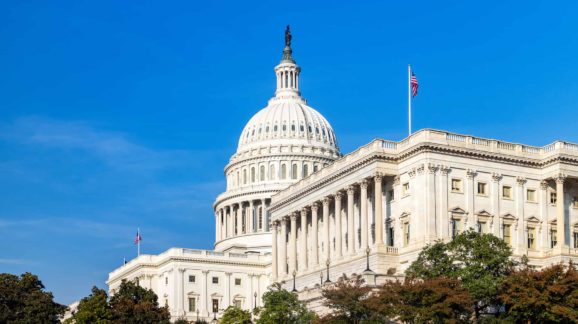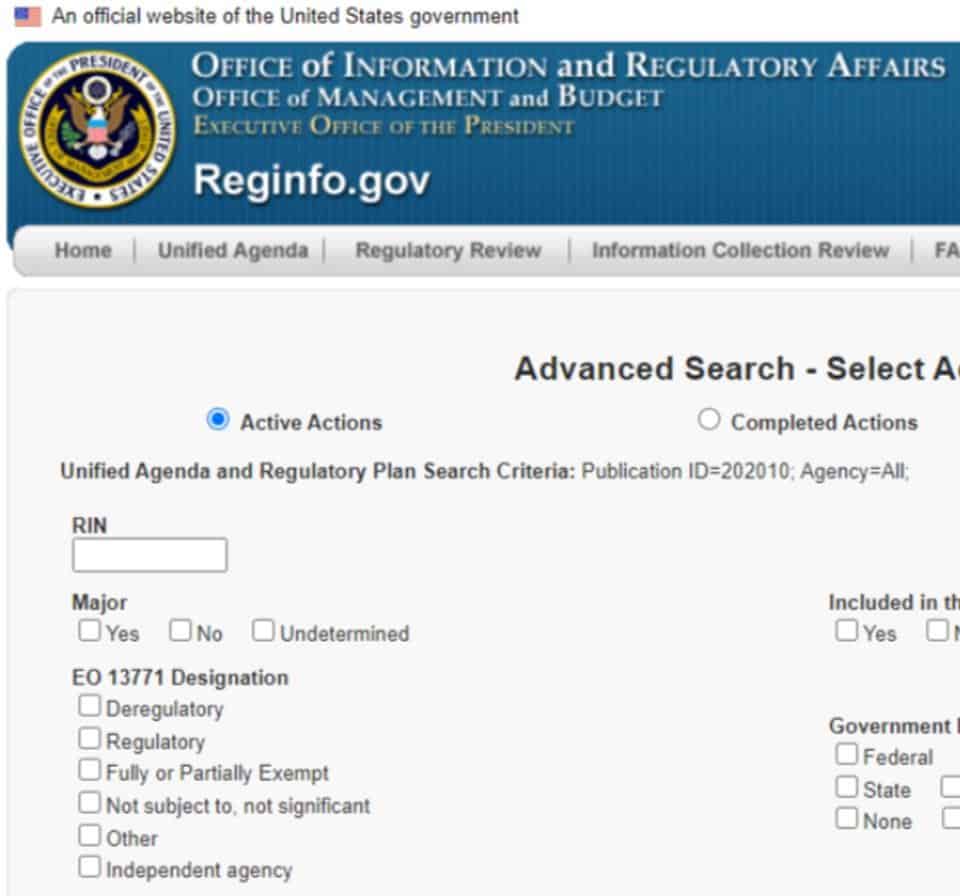Biden’s Spring 2021 Unified Agenda of Federal Regulation, by the Numbers

Photo Credit: Getty
The Biden administration released the Spring 2021 edition of the twice-yearly Unified Agenda of Federal Regulatory and Deregulatory Actions today. The purpose of the Agenda, which has been around since the early 1980s, is to lay out regulatory priorities of the federal bureaucracy and report on recently completed actions.
This time, the Unified Agenda of Federal Regulations takes a leap forward in activist government with the Office and Management and Budget (OMB) staff taking digs at the prior administration: “[T]he Unified Regulatory Agenda continues rolling back the obstacles to recovery, equity, and sustainability that the prior Administration put in place.”
“[T]here is still hard work ahead to build back better and more equitably,” the public is told. Overt progressive activist language signals a change for the Agenda and the OMB, which used to talk of cost-benefit balance and other admittedly wispy concepts rather than the vernacular of social agitation reflective of a series of Biden executive orders.
Aside from its policy framing, the major change in the Agenda from the prior Trump administration is in the way the underlying data (rule counts and such) get presented on reginfo.gov. Trump’s now-revoked “one-in, two-out” Executive Order 13771 on “Reducing Regulation and Controlling Regulatory Costs” indirectly sparked a designation on reginfo.gov indicating whether a regulation was deregulatory or regulatory. Selection options for each of the following used to be available (and see the screenshot image below):
- Deregulatory
- Regulatory
- Fully or Partially Exempt
- Not subject to, not significant
- Other
- Independent agency

These are now gone, as this next screenshot shows.

Note that these distinctions between regulatory and deregulation haven’t just silently been dropped from the new Spring 2021 edition of the Agenda; they’ve been scrubbed even from the Trump years in the database.
Like Biden’s day-one directive to remove Trump’s one-stop guidance document portals and the rules agencies had issued to codify their procedures, this is a blow to public disclosure, whatever one thinks of the administrative state as a means of governance.
Now to the numbers. Biden’s final rule counts as reflected in the Federal Register have not been particularly alarming (1,301 as of today). But that is a lagging indicator; as will be seen, the Agenda’s “Active” and “Long-term” rule categories imply more to come.
Biden’s overall rule count in the Spring Agenda is 3,959 at the “Active” “Completed,” and “Long-term” stages. At first blush, this is not that much more than Trump’s final December Agenda tally of 3,852 rules. There were, however, 653 rules deemed “Deregulatory” in that final Trump agenda, a now defunct pursuit. (Trump’s lowest count had been 3,209 in fall 2017).
Furthermore Biden’s agenda, reflected in his new $6 trillion fiscal budget proposal and as contained in his American Rescue, Jobs, and Families Plans is extraordinarily regulatory in nature. The traditional notice and comment regulation that would get captured in the regulatory agenda assumes less descriptive significance as the scope of government expands and spending categories comprise regulation before administrators enter the picture. This is a major issue with which legislators need to grapple, and its extent cannot be appropriately captured in the Agenda as it now exists nor in official documents like the annual (not actually) Report to Congress on regulatory costs and benefits.
The table below reflects the breakdown of Biden’s rules by category. We find 787 rules recently completed, while the 2550 active undertakings in the pipeline represent the bulk of rules in production process (again, pre-rule, proposed and final). There are 622 rules contemplated for the longer term.

Digging a tad deeper, the Unified Agenda presents a subset of rules classified as “economically significant,” meaning they have $100 million in effects. These represent the costlier subset of rules. In the Spring 2021 Agenda, 297 of the 3,959 are classified as such across the board. Broken down further, 65 have been recently completed, and there are 189 actively being prepped and 43 long-term.
In the “other significant” subset of rules, there are 1217 rules (244 completed; 755 active, 218 long-term.)
The “Long-term” rules category even in the Trump era made evident that the regulatory hounds would be turned loose as soon as the Trump administration ended. Even then, agencies unabashedly showed they planned more regulating than deregulating. The costlier rules among this subset represented the source of where future savings would have needed to come from, yet the regulatory always outweighed the deregulatory even before Biden. The long-tern horizon in the Unified Agenda of Federal Regulation always hinted at the eventual victory of those calling themselves the “resistance” to the Trump administration regulatory streamlining efforts, so we anticipate there will be no cost savings without E.O. 13,771.
Rolling back regulations requires going through the lengthy public notice-and-comment process, even though adding them may not. It takes time—more than Trump’s or any other executive’s four years—and the administrative state works to the advantage of agencies’ maintenance of regulatory edifices to which, novel as it was, E.O. 13,771 was never a threat.
Trump’s addressing of the abuse of guidance documents, even given its emphasis on sunshine and disclosure, proved no more durable than the two-for-one directive. We can expect the continuance of Biden executive orders adding to the scope of government, and for agencies to rely on guidance documents or interim rules. The Unified Agenda is an increasingly inadequate yardstick for disclosure and measurement.